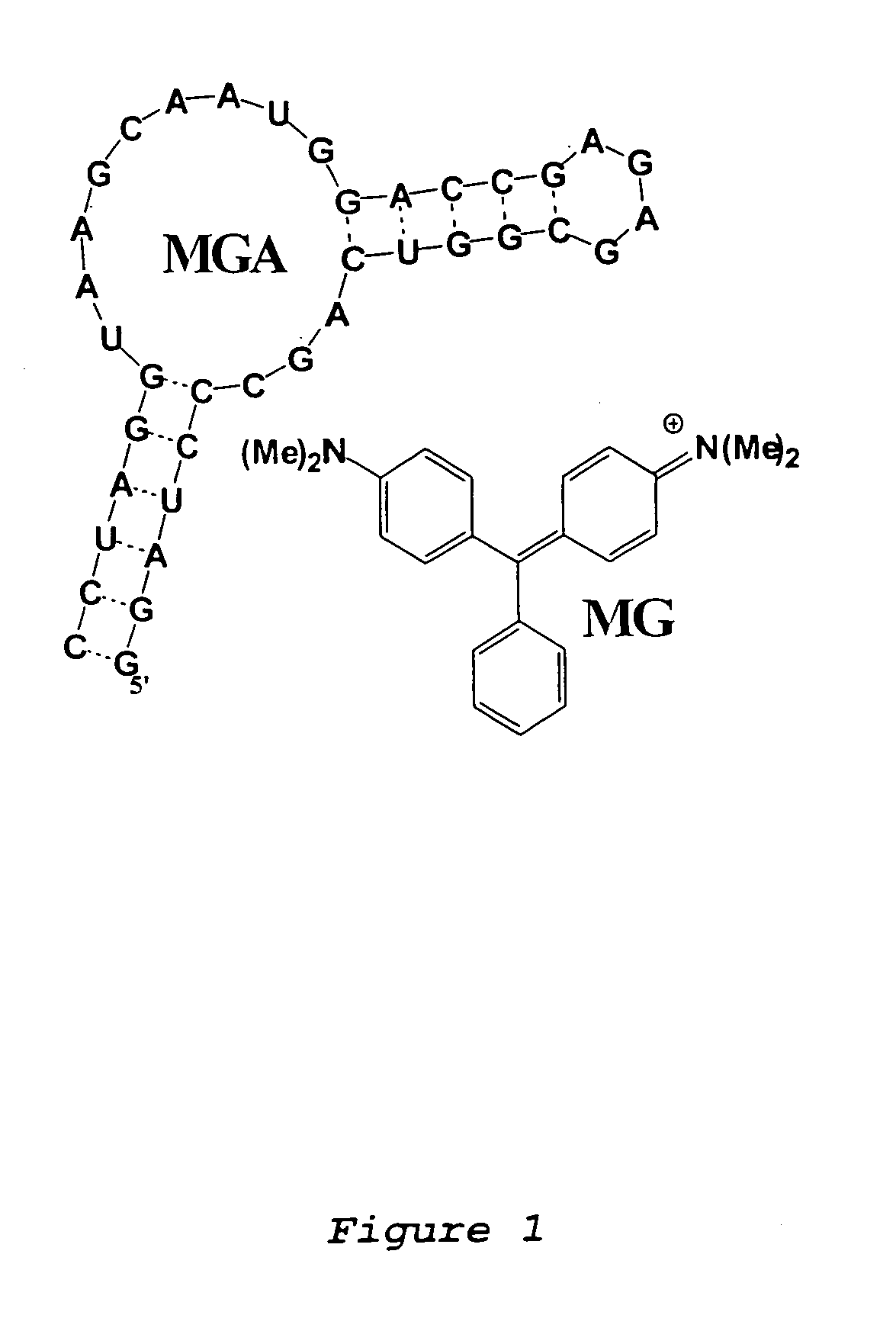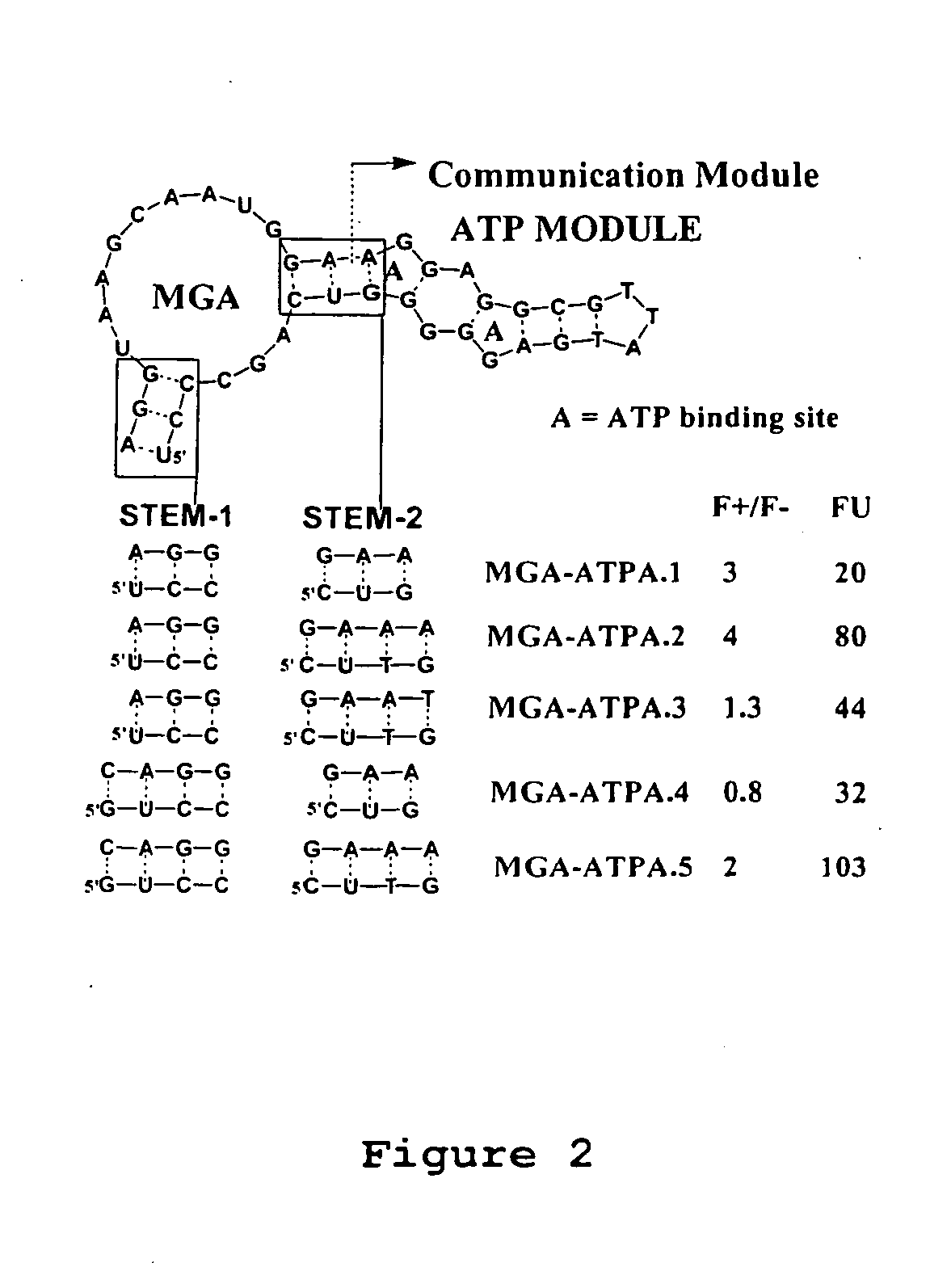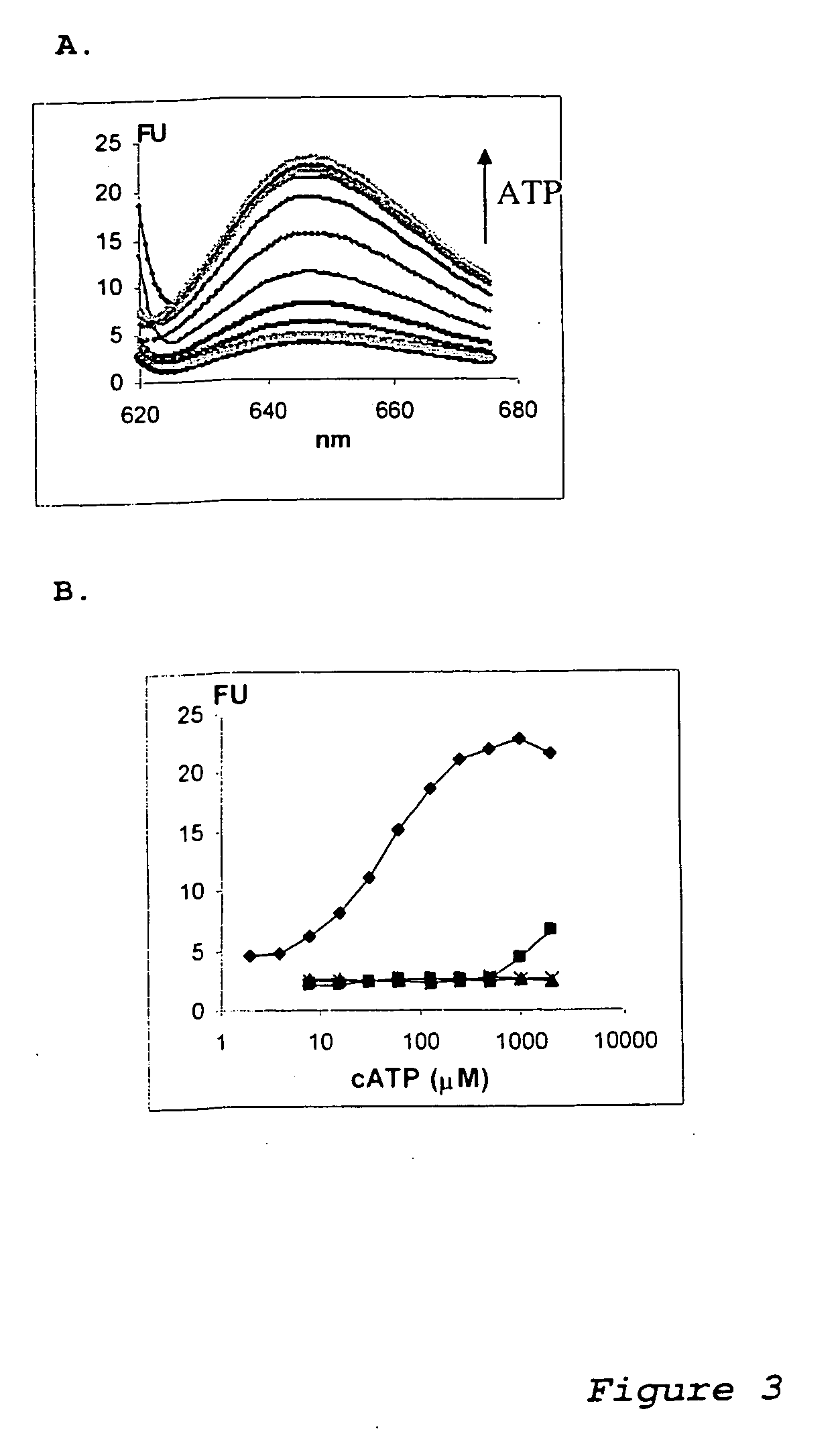Modular aptametric sensors without covalently attached fluorophores
a technology of aptametric sensors and fluorophores, applied in the direction of microbiological testing/measurement, biochemistry apparatus and processes, screening processes, etc., can solve the problem that the system has little potential for general intracellular applications
- Summary
- Abstract
- Description
- Claims
- Application Information
AI Technical Summary
Benefits of technology
Problems solved by technology
Method used
Image
Examples
Embodiment Construction
[0022] According to the invention, a method of detecting whether a specific compound is present in a test solution is provided comprising: (a) providing a composition comprising an oligonucleotide comprising a recognition portion, a reporting portion, and a double stranded stem portion which connects the reporting portion to the recognition portion, wherein a fluorescent dye is bound to the reporting portion; (b) contacting the composition with a control solution; (c) quantitating the fluorescence of the composition in contact with the control solution; (d) contacting the composition with the test solution under conditions which permit any of the specific compound present in the test solution to bind to the recognition portion and thereby alter the fluorescence of the composition without displacing the fluorescent dye from the reporting portion; and (e) quantitating the fluorescence of the composition in contact with the test solution, wherein a difference between the fluorescence q...
PUM
| Property | Measurement | Unit |
|---|---|---|
| excitation wavelength | aaaaa | aaaaa |
| excitation wavelength | aaaaa | aaaaa |
| fluorescent | aaaaa | aaaaa |
Abstract
Description
Claims
Application Information
 Login to View More
Login to View More - R&D
- Intellectual Property
- Life Sciences
- Materials
- Tech Scout
- Unparalleled Data Quality
- Higher Quality Content
- 60% Fewer Hallucinations
Browse by: Latest US Patents, China's latest patents, Technical Efficacy Thesaurus, Application Domain, Technology Topic, Popular Technical Reports.
© 2025 PatSnap. All rights reserved.Legal|Privacy policy|Modern Slavery Act Transparency Statement|Sitemap|About US| Contact US: help@patsnap.com



